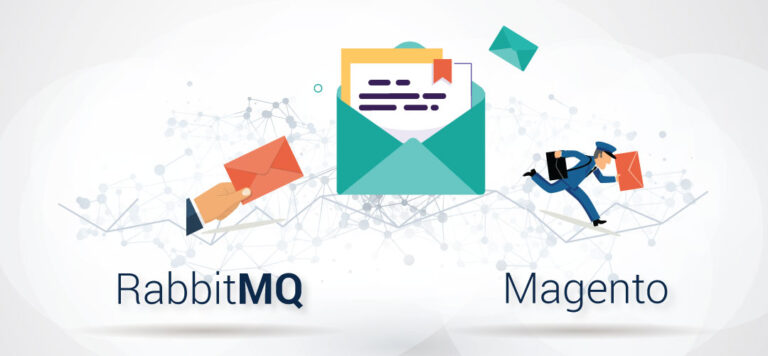If you’ve determined to rebuild your company website to enhance the user experience. The question that arises is WordPress which eCommerce solution platform should you use: WooCommerce or Magento?
eCommerce Solution for Business
These days, there are hundreds of e-Commerce solutions to pick from – all with their advantages and limitations. The most popular among them include Magento eCommerce, BigCommerce, WordPress, and Shopify, just to name a few.
But what satisfies one company will not necessarily work for another. You need to decide what it is required to achieve and then match the capabilities of each. We’re going to glance at the key difference between the two most successful platforms, Magento and WordPress.
Assessing your own business
Before probing into the pros and cons of each platform, the initial step is to work out precisely what you seem for in an eCommerce solution. Based on the complexity of your products or services, you may prefer for a dedicated eCommerce platform like Magento or a content management system like WordPress that comprises an eCommerce component like Woocommerce. The valid way to do this might be to simply list your primary objectives and goals for the business and the scheme at hand. Below are a few things to consider that will eventually help you make a decision:
- Current revenue from online sales – Overall business revenue is driven by online sales. If you individually want an online presence, then the CMS may not benefit you.
- Amount of products and catalogs – in a lot of cases, the number of products and scalability can be the determining factor in choosing the right solution.
- Complex buying process – how much customization is required to execute the checkout method fit your online store? By default, maximum solutions provide a similar cart/checkout experience. However, if your business model needs customizing the checkout then picking a platform that has flexibility is imperative.
It can often be difficult to determine a stand-out leader amongst the eCommerce platforms and CMS solutions– as they all offer a range of different features. Just be careful, as too many unnecessary features can make your website complicated, slow down the load-time and become an absolute vision from a developer’s point of view.
Read also: The Curious Grey Areas of the eCommerce businesses!
Let’s take a glance at some of the pros and cons of two of the most traditional solutions, WordPress and Magento.
WordPress
Although WordPress began as an uncomplicated blogging platform, over the last decade, it has culminated into a solid CMS solution with several plugins available to improve your website with a series of fully-functional eCommerce capabilities.
Today we’ll be explicitly looking at WooCommerce, a traditional plugin built for WordPress.
WooCommerce is perfect for small and medium-size online stores. It is free open source eCommerce plugin and in the last few years it has unbelievable growth.
Out of the box, WooCommerce isn’t as potent as Magento, but there are many good plugins ready to meet supplementary requirements, including:
- Very simple to install and configure
- Extremely customizable
- Backend management and reporting is very simple and manageable to operate, without the understanding of any coding
- Products and categories are straightforward to add and manage
- One of the most settled eCommerce solutions
- Search engine friendly
Some of the limitations and considerations include:
- Frequently massive updates may cause a significantly moderate version to divulge your site
- Some extensions grow from third parties and don’t have prominent support
- Some extensions are too pricey
WooCommerce is a comprehensive system for small to mid-sized online retailers. And of course for any developer or company that is already familiar with the WordPress interface.
If you’re starting out, then WooCommerce is the place to begin, as it’s very simple to use. However, it does lack functionalities that may be helpful for an enterprise eCommerce solution.
Magento
Magento is the most flourishing eCommerce solution for online shopping stores. Because the platform allows a set of versatility and customization. Like WordPress, Magento is open source, which suggests it enables developers to customize the look and functionality as required.
Magento development requires a greater level of coding skills, which require some experience with programming to setup your website. As a result, development prices can get expensive because of the complexities concerned with customization.
There are number of themes available free of cost for Magento. But we invariably encourage clients to create a customized design from scratch – to build the ultimate experience.
Here are remarkable features and benefits of the Magento platform:
- Open Source Solution – you can host Magento on your server. In order to do this you will require a Magento hosting specialist
- Develop highly-creative and responsive web designs – Magento has unrivaled versatility with all templates and themes
- A lot of payment gateways and shipping options is added – including integration with primary Australian banks and Australia Post
- It has a surprisingly good product and order supervision system – these bulk uploading features available to improve manage catalogs
- Good marketing and promotional tools – covers related products, coupons, multi-tier pricing and product packages
- Search engine friendly – ‘out of the box’ Magento requires a little configuration. However, it’s extremely searching engine friendly
- Manage multiple stores from the corresponding account – this makes multiple websites accessible to manage centrally.
Larger retailers and global brands prefer Magento because it grants a stack of out of the box features. This is updated with loads of third-party apps and also payment gateway modules. It also provides endless possibilities for future growth.
Price Comparison
The WooCommerce solution is affordable explication for those that are price conscious. WooCommerce is simple to manage. Compared with Magento which will be considerably more to develop and support.
It’s best to make sure with both WooCommerce and Magento that your developer is custom frame the website from scratch and not utilizing templates. Although the template is a quick solution, they often jam-packed with extra features. Therefore, it will reduce the speed of your site and make renewing the platform a nightmare at a later date.
What next?
If you are planning to create a new website or upgrade of your current website, then eCommerce solution is best for you.








Your blog is very nice… Thanks for sharing your information…
Your blog is very nice… Thanks for sharing your information…